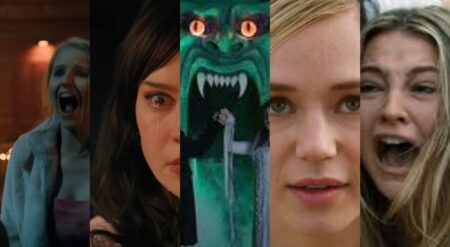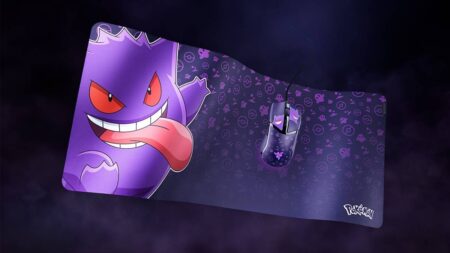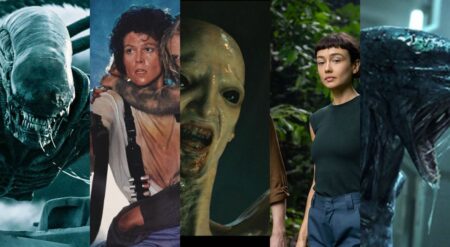Akira Kurosawa is one of the greatest filmmakers of all time. His six decades of masterpieces have been an inspiration to other filmmakers the world over for generations. Yet, Kurosawa remakes have been rare across the decades. Succesful ones even rarer.
Sure, George Lucas famously was inspired by The Hidden Fortress (1958) when making Star Wars (1977), and Sergio Leone took his inspiration for A Fistful of Dollars (1964) straight from Yojimbo (1961) without permission. But only a small number of movies have been true Kurosawa remakes.
Highest 2 Lowest is among the best Kurosawa remakes.
Spike Lee’s newest joint, Highest 2 Lowest, is the first commercial film remake of Kurosawa’s High and Low (1963). The Kurosawa remake uses many of the same plot beats, but completely transforms the emotional stakes of the original. It’s among the few great Kurosawa remakes thanks to its distinct take on the original work and its willingness to stand strong as its own movie.
Highest 2 Lowest doesn’t just transport the original from a shoe company in Japan to the music industry in New York City. The movie has its own distinct point of view on the world compared to the original. It follows the same structure, but feels like a completely new, modern, and unique movie. If you’re curious to see how other filmmakers have adapted Kurosawa over the years, check out these three other Kurosawa remakes.
The Magnificent Seven (1960)

Director: John Sturges
Writer: William Roberts
Based On: Seven Samurai (1954)
Where to Watch: Prime Video
When Akira Kurosawa’s Seven Samurai (1954) came out, it was lauded as the greatest samurai movie to date. It’s still considered one of the best of all time. It was also seen in the U.S. as quite akin to Hollywood’s famous Western movies. Like in Westerns, the main characters were rough loners who banded together for just causes, were unafraid of doling out justice with blood, and the line between good and evil was abundantly clear.
Much like Seven Samurai became one of the most important and beloved films of its genre, The Magnificent Seven (1960) was quickly recognized as one of the greatest Westerns of all time—an accolade that endures today. It catapulted the careers of actors like Steve McQueen and Charles Bronson and boasts one of Hollywood’s most memorable scores.
Where the two films diverge most is that Seven Samurai is a 3.5-hour epic with deep character study and relationship building amongst its characters. The Magnificent Seven (1960) is a pure action movie that takes little time showing off character or depth.
Typical of Old Hollywood, black and white movies were for drama and Technicolor marvels like The Magnificent Seven (1960) were for action. Nonetheless, both movies stand tall at the peak of their similar but distinct genres. The Magnificent Seven (1960) sprinkles in some character here and there, but Seven Samurai goes much farther.
Last Man Standing (1996)

Director: Walter Hill
Writer: Walter Hill
Based On: Yojimbo (1961)
Where to Watch: VOD
Yojimbo (1961) and Last Man Standing (1996) share the Samurai-to-Western movie adapatation pipeline as Seven Samurai and The Magnificent Seven, but thirty years later, the a neo-Western approaches adaptation rather differently than the Technicolored classics did.
The biggest difference between Kurosawa’s Yojimbo (1961) and Last Man Standing (1996) is what motivates the main characters. Last Man Standing is an explicit remake of Yojimbo, transporting a similar plot about a stranger who pits two rival gangs against one another from 19th-century Japan to Prohibition-era Texas.
In the Kurosawa remake, Bruce Willis’ John Smith is less noble than Toshirô Mifune’s Sanjuro Kuwabatake was. Sanjuro may have been in it for the money at first, but it’s ultimately his sense of justice that keeps him invested in the town’s troubles. For Smith, it’s self-preservation above all that motivates him.
Last Man Standing (1996) is an interesting Kurosawa remake because it’s quite similar to the original Yojimbo (1961). Except there is one key change: that Smith is on the run from the law and forced to help end the gang war to protect himself.
Yojimbo in 60s Japan saw a ruthless warrior focused on defeating evil and saving innocent families because it was right. Last Man Standing in the American 90s took the same story and focused on a gangster’s self-preservation and womanizing. Yet, the central point remains that bad men are undeserving of remorse in the face of swift justice.
Living (2020)

Director: Oliver Hermanus
Writer: Kazuo Ishiguro
Based On: Ikiru (1952)
Where to Watch: Hulu/Disney+
Unlike The Magnificent Seven and Last Man Standing, Living (2020) is more of a shot-for-shot remake of Ikiru (1952). The remake relocates the story to London, England, from Tokyo, Japan. But the story remains the same. A middle management government worker learns that he is dying of cancer and takes it upon himself to live his final days as meaningfully as he can, personally and professionally.
Bill Nighy plays the pencil-pusher Williams in the remake, exacting a mild manner and deep heart, much like Takashi Shimura did in the original movie. Nighy was even nominated for an Oscar for his role, as was the adapted screenplay. Oliver Hermanus’s Living (2020) is the kind of remake that neither adds to nor detracts from the value of its original. Both movies can stand happily side by side as different iterations of the same excellent film.
Living (2020) may be a shot-for-shot remake of Ikiru (1952), but by relocating the story to take place in England, it changes the cultural specificity. And yet, the remake is so well-construed that it also highlights the cultural commonalities between the Japanese and British bureaucracies. This type of remake is a great way to demonstrate the common experience of different cultures through the film medium.
Kurosawa remakes have taken on different shapes over the decades. Each of these Kurosawa remakes approaches the art of remake a little differently. They entertain and moralize in their own ways, distinct from both one another and the Kurosawa movies they remake.
Highest 2 Lowest is playing now in select theaters and will stream on Apple TV+ September September 5th.
All of Akira Kurosawa’s films ares treaming now on HBO Max and the Criterion Channel.








